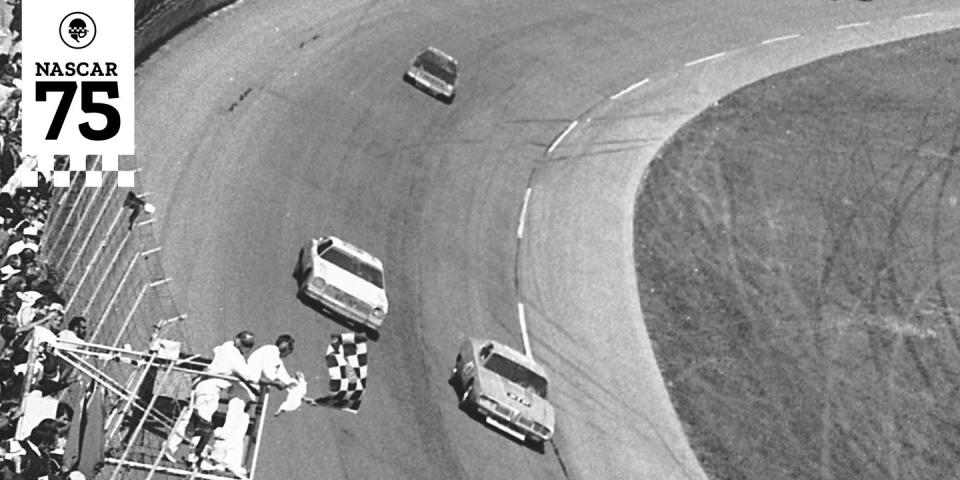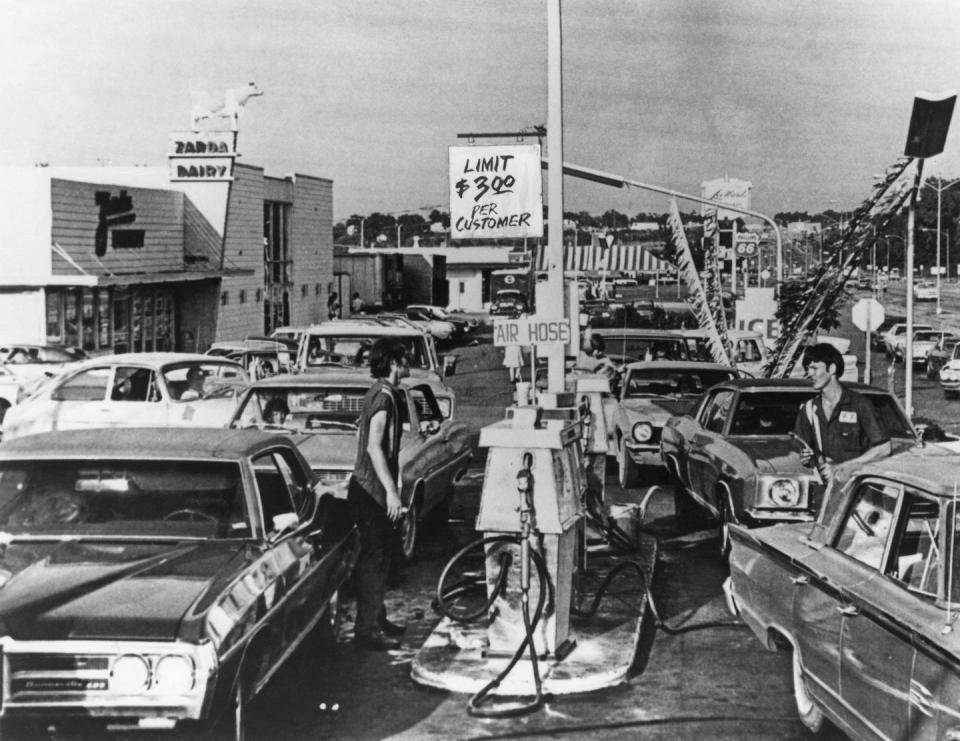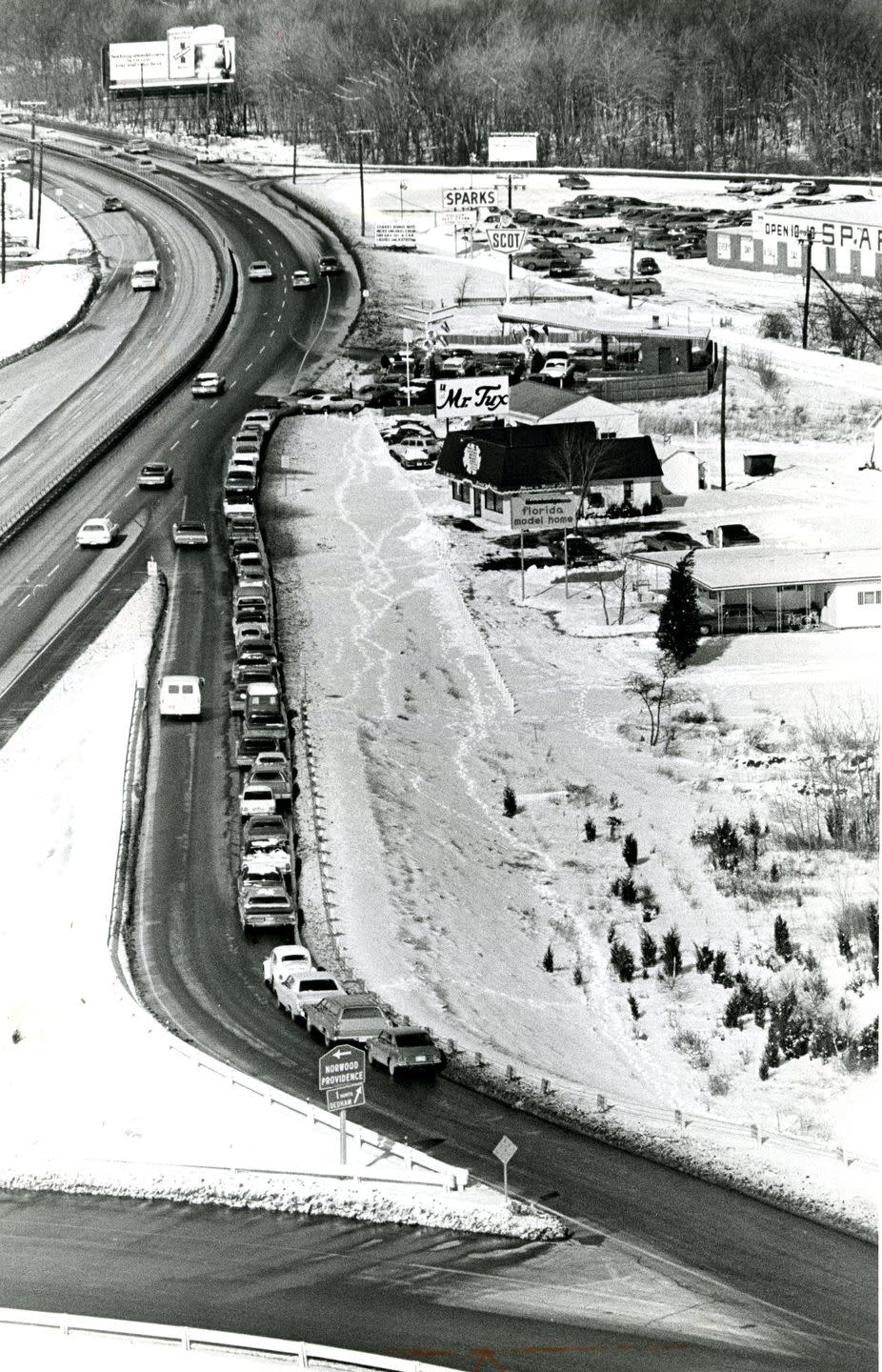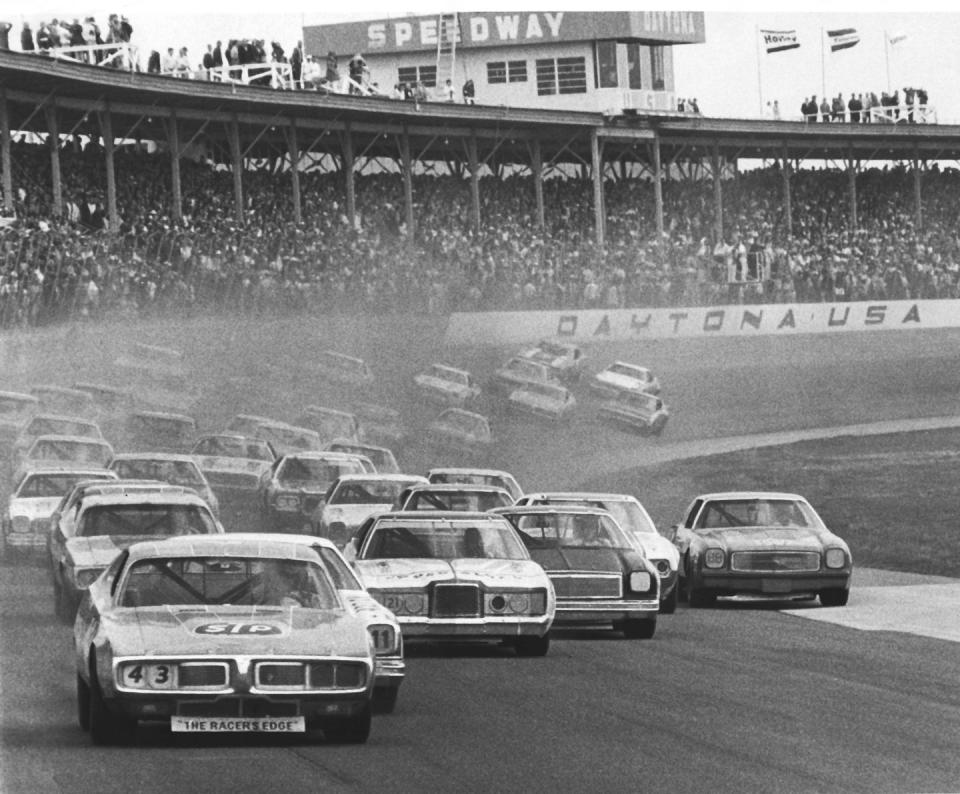How an OPEC Oil Embargo Forced NASCAR to Set an Example in 1974

https://www.autoweek.com/ford/In 1974, NASCAR chose to reduce the length of several races by 10% or more to, in essence, “save fuel" during a global energy crisis that began in 1973.
Perhaps the most notable race that was shortened was the 1974 season-opening Daytona 500, which became the Daytona 450.
NASCAR commissioned a study on how much fuel was actually utilized by the racing series, and those results were shocking.
There were a number of “fuel crisis” episodes in NASCAR history, but none as significant as in 1974, when the sanctioning body chose to reduce the length of several races by 10 percent or more to, in essence, “save fuel” or “conserve energy.”
Perhaps the most notable race that was shortened was the 1974 season-opening Daytona 500. Check that. The Daytona 450. Instead of its usual 200 laps around the 2.5-mile Daytona International Speedway, the race was scaled back to only 180 laps, thus adhering to requests by federal government officials to help give a good example of fuel conservation to the public who followed NASCAR racing.

However, some reference sources such as Racing-Reference.info still show the 1974 event being a normal 200-lap event, with the first 20 laps listed as "not scored."
But conserving fuel was only part of what NASCAR faced. Although the sanctioning body was receiving a virtually unlimited supply of sponsorship dollars from primary entitlement sponsor R.J. Reynolds and its Winston cigarette brand, there was still plenty of problems in NASCAR-land.
Among those, which had actually begun a few years earlier, was Ford scaling back on the number of cars and teams it would financially support as the 1970s dawned. And then NASCAR mandated the use of restrictor plates to slow cars down at superspeedways in Daytona and Talladega, which initially proved extremely unpopular among teams, drivers and most importantly, fans.
Ford would continue scaling back its stock car program, to the point where by 1971, there were no factory-backed cars from the Ford ranks. Right behind Ford out the door was Dodge/Mopar, which left NASCAR in protest of having its cars’ motors and winged aerodynamic issues outlawed by the sanctioning body. While Chevrolet agreed to pick up some of the slack, it still could not successfully fill the void left by Chrysler and Ford, who would eventually return to the fold a few years after their respective departures.

Things went from bad to worse in late 1973 and on into early 1974 when the Organization of Petroleum Exporting Countries (OPEC) decided in October to stop exporting oil to the United States, Japan and Europe, prompting severe fuel rationing and forcing the government to lean heavily on NASCAR to do its fair share by cutting normal lengths of specific races.
NASCAR officials met with their racing colleagues from NHRA, IMSA, USAC and SCCA on Nov. 15, 1973 in Chicago to try and come up with a plan that would allow racing to continue on in 1974 and beyond.
With Bill France Sr. having stepped down in retirement at the end of the 1972 season (and was replaced by John Cooper, who assume the title of “executive director"), NASCAR was virtually helpless to adhere to increasing demands by the federal government.
One of those chief impediments was a measure by then-President Richard Nixon who shuttered all gas stations in the country from 9 p.m. Saturday to midnight Sunday. As a result, even with tankers that brought fuel to NASCAR tracks, a considerable amount of discussion was made to move races from Sundays to Saturdays, so that it would “show” how NASCAR was adhering to government sanctions.
In a stroke of near-genius, NASCAR commissioned a study on how much fuel was actually utilized by the racing series. Surprisingly, NASCAR consumed the equivalent of seventh on the list of energy used—behind vacation travel, airline travel, movie attendees, football fan attendance at pro stadiums, basketball was fifth-ranked, followed by horse racing and then a truly distant seventh, motorsports, with NASCAR using a slim total (in comparison to what its predecessors were using) of just 2.2 million barrels (or 93,639,696 gallons) of oil/gasoline.

To surreptitiously “force” leagues and related entities to reduce oil consumption, the Federal Energy Office “asked” those entities to reduce consumption by as much as 20 to 25 percent. While many in other leagues grumbled at the reduction they’d have to achieve, NASCAR did not grumble at all, knowing things could be a lot worse if some officials had been more adamant at NASCAR and USAC and NHRA for fuel “waste” in their national events.
As it turned out, due in part to its conservation efforts, NASCAR actually wound up saving over 30 percent of its fuel/oil consumption in 1974 over 1973 and the restrictions placed upon it by the government were eventually lifted and race lengths returned to their normal distances beginning in 1975.
As for the 1974 Daytona 450, Richard Petty won the event. He led, you guessed it, 74 laps.
Follow Autoweek correspondent Jerry Bonkowski on Twitter @JerryBonkowski

 Yahoo Autos
Yahoo Autos 